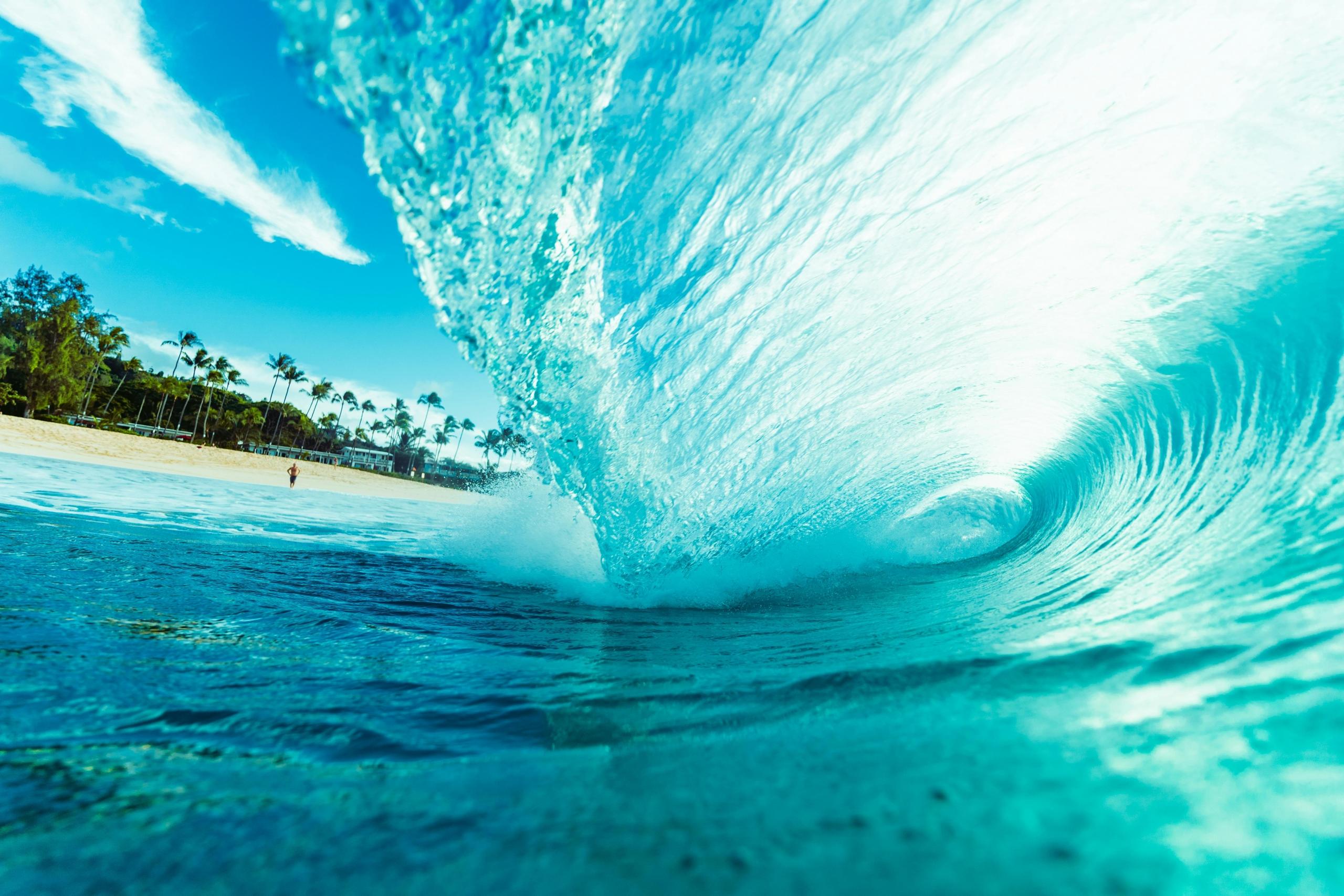Waves permeate our surroundings, influence our senses and manifest in various materials and motions.
From the ripples caused by a dropped stone in water, to the crashing waves at the beach, waves are everywhere. In this exploration, we delve into the physics definitions of terms like wave amplitude, wave oscillation, wave propagation, frequency, and wavelength.
We scrutinise significant wave occurrences in our world, from gravitational and electromagnetic waves to sound and water waves. Understanding the phenomena of waves is crucial, as is recognising and identifying waves.
So, if you want to know more about the definition of reflection or have questions about what longitudinal waves and transverse waves are, then you're in the right place.

What Defines a Wave?
You've likely encountered diagrams of waves displaying a fluctuating line moving above and below a central point in regular intervals. The consistency in the distance between the highest points (crests) and the uniform height and depth of crests and troughs defines a wave.
A wave, fundamentally, is a disturbance or variation in space-time that is accompanied by an energy transfer—which is an essential definition to remember.
In an ideal scenario, a normal wave line would be flat with no disturbance. What the diagram portrays is the transfer of energy causing the disturbance. In reality, energy is continually transferred and results in complex variations and interferences beyond what any diagram can fully capture.
Mechanical Waves and Electromagnetic Waves
Before delving into the intricacies of various wave shapes and movements, it's crucial to identify the two preceding types of waves. Perhaps you're familiar with electromagnetic waves, which, incidentally, encompass light waves.

Mechanical Waves
The most common mechanical waves found in our surroundings include ocean waves, water ripples, and the audible sound waves we perceive. There are also seismic waves responsible for the destructive force of earthquakes. These waves necessitate a medium, a form of matter, through which they can propagate. In these instances, energy travels across particles.
Consider an earthquake, where an initial force induces disturbances across the Earth's matter. The far-reaching impact, causing damage hundreds of miles from the epicentre, is facilitated by waves that traverse through the Earth's substance and convey kinetic energy over extensive distances. If the Earth's matter were removed and seismic waves were hypothetically encountered in a vacuum, the earthquake could not propagate.
Electromagnetic Waves
Mechanical waves necessitate a medium for energy transfer which is unlike electromagnetic waves such as light, which can propagate through a vacuum. This poses a challenge to our understanding of waves. The duality of light, behaving as both a particle and a wave, depending on observation, adds complexity to this phenomenon. Electromagnetic waves, including light and radio waves, result from the interaction between a magnetic and an electric field, generating fluctuations that propagate as waves.

Waves and Energy Transfer
Now that we've established this, let's focus on the important aspect of the nature and structure of waves—their ability to transfer energy.
In waves, the primary function is the transmission of energy. While the particles or matter experiencing the waves may momentarily shift, the overall material movement is nil: particles revert to their original positions once the wave has passed. To help understand this, it is important to remember that waves transfer energy, not matter.
Longitudinal, Transverse, and Surface: The Different Types of Waves?
In addition to these two mechanical and electromagnetic waves, there are also various classifications to explain the nature of wave movements. These categories delineate how particles are displaced by the wave and how the wave propagates diverse materials.
So, what are longitudinal waves and transverse waves?
Longitudinal Waves
Longitudinal waves are characterised by particles moving parallel to the direction of energy in the wave and are devoid of the typical up-and-down motion seen in classic wave diagrams. Scientifically, this lack of polarisation translates to the absence of peaks and troughs, with wave oscillation occurring in the direction of the energy's travel. In answering the question: what type of wave is sound, it is this type of wave that is in fact, capable of traversing through solids, liquids, and gases.

Transverse Waves
In a transverse wave, the movement of particles occurs at right angles, or perpendicularly, to the direction of energy movement, as depicted in our common wave diagram. Unlike longitudinal waves, transverse waves exhibit clear wave polarisation, characterised by distinct movement between peaks and troughs.
This polarisation is quantified as wave amplitude and represents the distance between peaks and the centre of the wave. Transverse waves are particularly straightforward to study, as the polarisation and wavelength—the distance of one wave oscillation (the time for a wave to repeat itself)—are easily observable.
Visualise raising and lowering a rope or slinky rapidly and you will witness a peak travelling along the length to demonstrate the movement of a transverse wave.
Whether you need a tutor to help you understand the definition of reflection or explain what type of wave is sound, Superprof can help.
Surface Waves
Surface waves entail particles moving in a circular motion as a result of an initial disturbance. When it comes to what are longitudinal waves and transverse waves, surface waves are essentially a fusion of transverse and longitudinal components that occur at the interface between distinct media. Everyday examples include the ripples produced when a stone is dropped into a water pool. The circular motion of these ripples results from the amalgamation of both transverse and longitudinal characteristics.
If you want to know more about what are longitudinal waves and transverse waves, there are additional Superprof articles that delve into the subject more deeply.

The Different Parts of a Wave?
In case you are using this article to help you with your schoolwork, it is important to be well acquainted with the terminology discussed so far. Let us take a moment to review the pivotal aspects of a wave.
- Rest Position: This refers to the rest position of particles when undisturbed. In other words, when no energy or wave is passing through. On a wave diagram, it is represented by the line drawn through the centre of the wave.
- Displacement: This is when the distance a particle has moved from its rest position due to disturbance.
- Wave Amplitude: This refers to the measurement of displacement and denotes the maximum disturbance of a specific point in the medium. It is also the distance between the rest position and the highest peak or trough.
- Peaks and Troughs: This refers to the points of greatest disturbance or maximum displacement, above and below the rest position.
- Wave Oscillation: The repetition of a wave, representing the space from peak to peak.
- Wavelength: This refers to the actual distance covered by one wave oscillation and is usually measured from peak to peak.
- Frequency or Wave Speed: This refers to the number of times a wave oscillates in a second.
Would you like to know more about the definition of reflection and refraction? Do you want to know more about what type of wave is sound?















